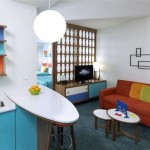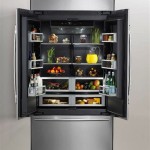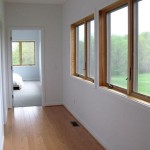Interior Design Bathroom: Transforming Your Personal Sanctuary
The bathroom, often considered a private sanctuary within the home, presents a unique opportunity for interior design. Beyond mere functionality, a well-designed bathroom can enhance comfort, promote relaxation, and reflect personal style. This article explores key considerations for interior design within this crucial space.
1. Functionality and Space Management
Prioritizing functionality is paramount in bathroom design. This involves maximizing space utilization and ensuring ease of movement. Careful consideration should be given to the layout, size, and placement of fixtures, fittings, and storage elements. For instance, smaller bathrooms can benefit from space-saving solutions like corner sinks, wall-mounted toilets, and vertical storage units. In larger bathrooms, creating distinct zones for bathing, grooming, and relaxation can enhance functionality and create a more balanced aesthetic.
Another crucial aspect of functionality is accessibility. Designing with accessibility in mind ensures the bathroom remains usable for all individuals regardless of age or physical limitations. This can be achieved through features like grab bars, walk-in showers, and non-slip flooring. The integration of such features without compromising on style is a key aspect of modern bathroom design.
2. Aesthetics and Personal Style
The aesthetic appeal of a bathroom plays a significant role in creating a relaxing and enjoyable experience. This involves carefully selecting color palettes, materials, and finishes that complement the overall design scheme. Light and airy color schemes, often incorporating soft pastels, whites, and natural tones, can create a sense of calm and spaciousness. Conversely, darker hues can add drama and sophistication, while bold accent colors can create visual interest.
Materials and finishes play a crucial role in shaping the bathroom's aesthetic and defining its overall character. Natural stone, such as marble or granite, exudes elegance and luxury. Tile offers a versatile option with a wide range of colors, patterns, and textures. Wood, though used sparingly due to moisture sensitivity, can add warmth and a touch of nature. The choice of materials should be guided by factors like durability, maintenance requirements, and personal preferences.
3. Lighting and Ventilation
Lighting is an often overlooked yet essential element in bathroom design. It significantly influences the atmosphere and functionality of the space. Adequate general lighting is crucial for everyday tasks, while strategically placed task lighting can illuminate specific areas like the vanity mirror. Natural light, when possible, can add brightness and create a more inviting feel. To achieve optimal lighting, consider using a combination of different types of fixtures, including overhead lighting, recessed lights, and wall sconces.
Proper ventilation is equally important, particularly in bathrooms where moisture levels can rise due to showering or bathing. Adequate ventilation helps prevent mold and mildew growth, ensuring a healthy and comfortable environment. This can be achieved through the use of exhaust fans, open windows, or a combination of both. The fan's capacity should be sufficient to efficiently remove moisture from the room.
4. Incorporating Design Trends
Staying current with design trends can elevate a bathroom's aesthetic. One notable trend is the use of natural elements, such as wood accents, plants, and stone materials. These elements bring a sense of tranquility and connect the bathroom with the outdoors. Another growing trend is the minimalist aesthetic, characterized by clean lines, simplicity, and open spaces. Minimalist bathrooms often feature neutral colors, sleek fixtures, and minimal ornamentation.
Sustainable design is a growing trend in all areas of home design, and bathrooms are no exception. Incorporating sustainable materials, like recycled glass or bamboo, and water-efficient fixtures can minimize environmental impact. Additionally, using energy-efficient lighting and appliances can reduce energy consumption and save money. By embracing sustainable design principles, homeowners can create a bathroom that is both stylish and environmentally conscious.

Modern Bathroom Design Ideas In 2024 Designcafe

5 Modern Bathroom Interiors That Exude Style Carpentry Singapore

Small Bathroom Ideas To Create Beautiful Toilet Designs Livspace

Small Bathroom Ideas To Amp Up Designs 20

5 Bathroom Interior Design Ideas That Blend Modern With Luxury Carpentry Singapore
Interior Designers Reveal Mistakes To Avoid When Designing A Bathroom

Bathroom Interior

Bathroom Design Ideas 2024 Decor Interior Modern Luxury

Top 10 Bathroom Interior Designers With Covetable Style Decorilla

Small Bathroom Design Ideas For Your Home Designcafe








